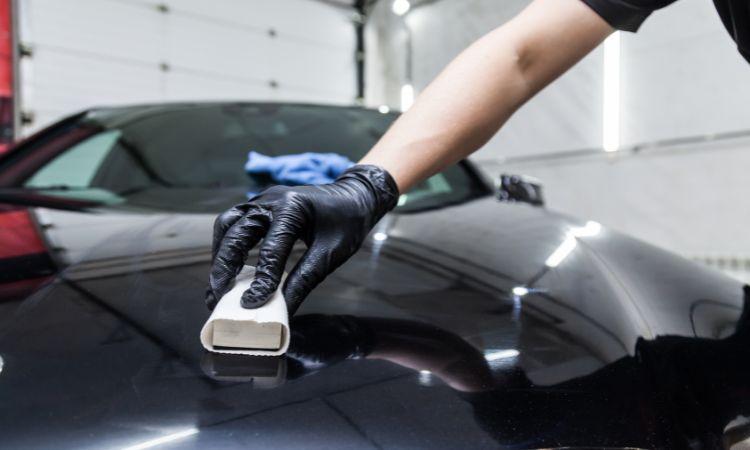The global scratch-resistant coating market size has been steadily growing in recent years, and its significance in various industries cannot be overstated. In 2023, the market size reached approximately USD 96.20 million. Projections indicate that it will continue to expand, with an estimated CAGR of 4.2% between 2024 and 2032, reaching a value of USD 121.95 million by 2032 [source]. Among the industries benefiting from these coatings, the healthcare sector stands out as a critical player. In this blog post, we’ll explore the essential role that scratch-resistant coatings play in the healthcare industry.
Understanding Scratch-resistant Coatings
Before delving into their significance in healthcare, let’s establish a clear understanding of what scratch-resistant coatings are and how they function. Scratch-resistant coatings, as the name suggests, are protective layers applied to surfaces to minimize or prevent scratches. These coatings work by providing a resilient barrier that absorbs and disperses impact, reducing the likelihood of surface damage.
There are various types of materials used in scratch-resistant coatings, each with its unique properties and advantages. In healthcare applications, the choice of coating material is essential to ensure compatibility with the specific environment and requirements.
Importance in Healthcare Settings
Healthcare environments are demanding and require equipment and surfaces that can withstand constant use and cleaning. Scratch-resistant coatings play a crucial role in maintaining the integrity and functionality of various items in healthcare settings.
-
Medical Equipment
Scratch-resistant coatings are indispensable for protecting the surfaces of medical equipment. Consider medical tablets and touchscreens used for patient records and diagnostics. These devices are frequently exposed to wear and tear, making them susceptible to scratches. A scratched screen can hinder visibility and compromise the accuracy of medical data. In surgical settings, precision is paramount, and even minor damage to surgical instruments can affect their effectiveness. Scratch-resistant coatings on these instruments help ensure their longevity and performance.
-
Benefits in Healthcare
The benefits of incorporating scratch-resistant coatings in healthcare settings are multifaceted. Firstly, durability and longevity are enhanced. With the high cost of medical equipment and instruments, it’s essential to maximize their lifespan. Scratch-resistant coatings provide an additional layer of protection, reducing the need for frequent replacements.
Secondly, hygiene and infection control are critical in healthcare. Medical professionals must maintain a sterile environment to prevent cross-contamination and the spread of infections. Scratch-resistant coatings facilitate cleaning and disinfection processes, as they create smooth, non-porous surfaces that are easy to sanitize. This feature is especially crucial for equipment that comes into direct contact with patients or biological fluids.
Case Studies
To illustrate the practical impact of scratch-resistant coatings in healthcare, let’s examine a few real-world examples.
-
Medical Tablets and Touchscreens
In modern healthcare, electronic medical records and patient data management are essential. Medical tablets and touchscreens are commonly used by healthcare professionals for data entry, diagnostics, and communication. These devices are subjected to constant handling and cleaning, making them susceptible to scratches. Hospitals and clinics that have adopted scratch-resistant coatings on their screens have reported reduced screen damage, improved device longevity, and enhanced user experience. This ultimately translates into cost savings and improved patient care.
-
Diagnostic Devices
Diagnostic equipment, such as ultrasound machines, X-ray screens, and laboratory analyzers, rely on clear and unobstructed displays. Any scratches or damage to these screens can impede accurate diagnosis and analysis. By applying scratch-resistant coatings to these devices, healthcare facilities ensure that the quality of medical imaging and test results remains consistently high. This not only benefits patient outcomes but also reduces the need for costly repairs and replacements.
Success Stories and Improvements
Numerous healthcare facilities have reaped the benefits of incorporating scratch-resistant coatings into their operations. Success stories abound, with hospitals, clinics, and medical device manufacturers reporting improved equipment durability, reduced maintenance costs, and enhanced patient care.
For example, a leading hospital chain adopted scratch-resistant coatings on the screens of their medical tablets and saw a significant reduction in screen damage incidents. This led to cost savings in terms of fewer screen replacements and improved operational efficiency.
In another case, a manufacturer of surgical instruments began applying advanced scratch-resistant coatings to their products. Surgeons reported improved tactile feedback and precision during procedures, thanks to instruments that remained scratch-free throughout their use. This not only improved patient safety but also enhanced the reputation of the manufacturer in the medical community.
Future Trends and Innovations
As technology and materials continue to advance, we can expect further innovations in the field of scratch-resistant coatings and their applications in healthcare settings.
-
Emerging Technologies in Scratch-resistant Coatings
Researchers and manufacturers are continually developing new coating technologies that offer enhanced scratch resistance and durability. Nanotechnology, for instance, has paved the way for coatings with ultra-thin protective layers that are highly effective in preventing scratches. These coatings are becoming increasingly popular in healthcare for their superior performance.
-
Potential Applications in Healthcare
Beyond the traditional applications, scratch-resistant coatings hold promise in emerging areas of healthcare. One exciting potential is the use of these coatings in wearable medical devices, such as smartwatches and health monitoring sensors. These devices are often exposed to external forces and environmental factors, making them prone to scratches. Incorporating scratch-resistant coatings can extend their lifespan and maintain accuracy in health data monitoring.
-
Sustainability Aspects
With growing concerns about environmental sustainability, researchers are also exploring eco-friendly options for scratch-resistant coatings. Sustainable coatings that reduce the environmental impact of healthcare equipment production and disposal will likely gain traction in the industry.
Challenges and Considerations
Read More Articles
biggest motorcycle company in the world
While scratch-resistant coatings offer numerous advantages in healthcare, there are also challenges and considerations to be mindful of.
-
Maintenance and Cleaning
Maintaining scratch-resistant coated surfaces requires specific cleaning procedures to avoid damage. Abrasive or harsh cleaning agents should be avoided, as they can compromise the integrity of the coating. Healthcare facilities must educate their staff on proper cleaning techniques to ensure the longevity of coated surfaces.
-
Cost Considerations
The upfront cost of applying scratch-resistant coatings to medical equipment and instruments can be a consideration for healthcare providers, particularly for smaller facilities with limited budgets. However, it’s essential to weigh this initial investment against the long-term benefits in terms of reduced maintenance and replacement costs.
-
Regulatory and Safety Standards
Healthcare equipment must adhere to strict regulatory and safety standards to ensure patient safety and data integrity. When implementing scratch-resistant coatings, healthcare providers and manufacturers must ensure that these coatings meet industry-specific requirements and do not compromise the quality or safety of medical devices.
Conclusion
The global scratch-resistant coating market’s growth is a testament to the increasing recognition of the value these coatings bring to various industries. In the healthcare sector, where precision, durability, and hygiene are paramount, scratch-resistant coatings have become indispensable.
In 2023, the market size reached approximately USD 96.20 million, and projections indicate a continued upward trajectory, with an estimated CAGR of 4.2% between 2024 and 2032, reaching a value of USD 121.95 million by 2032 [source]. These figures underscore the significance of scratch-resistant coatings in healthcare and their potential to enhance patient care, reduce costs, and drive innovation.
As technology continues to advance, we can look forward to even more sophisticated coatings that offer improved scratch resistance, sustainability, and versatility. Healthcare providers and manufacturers must stay at the forefront of these developments to leverage the full benefits of scratch-resistant coatings while addressing the associated challenges.
In conclusion, scratch-resistant coatings are not merely protective layers; they are enablers of better healthcare outcomes, helping medical professionals provide the best possible care to their patients while ensuring the longevity and reliability of critical equipment and instruments.



